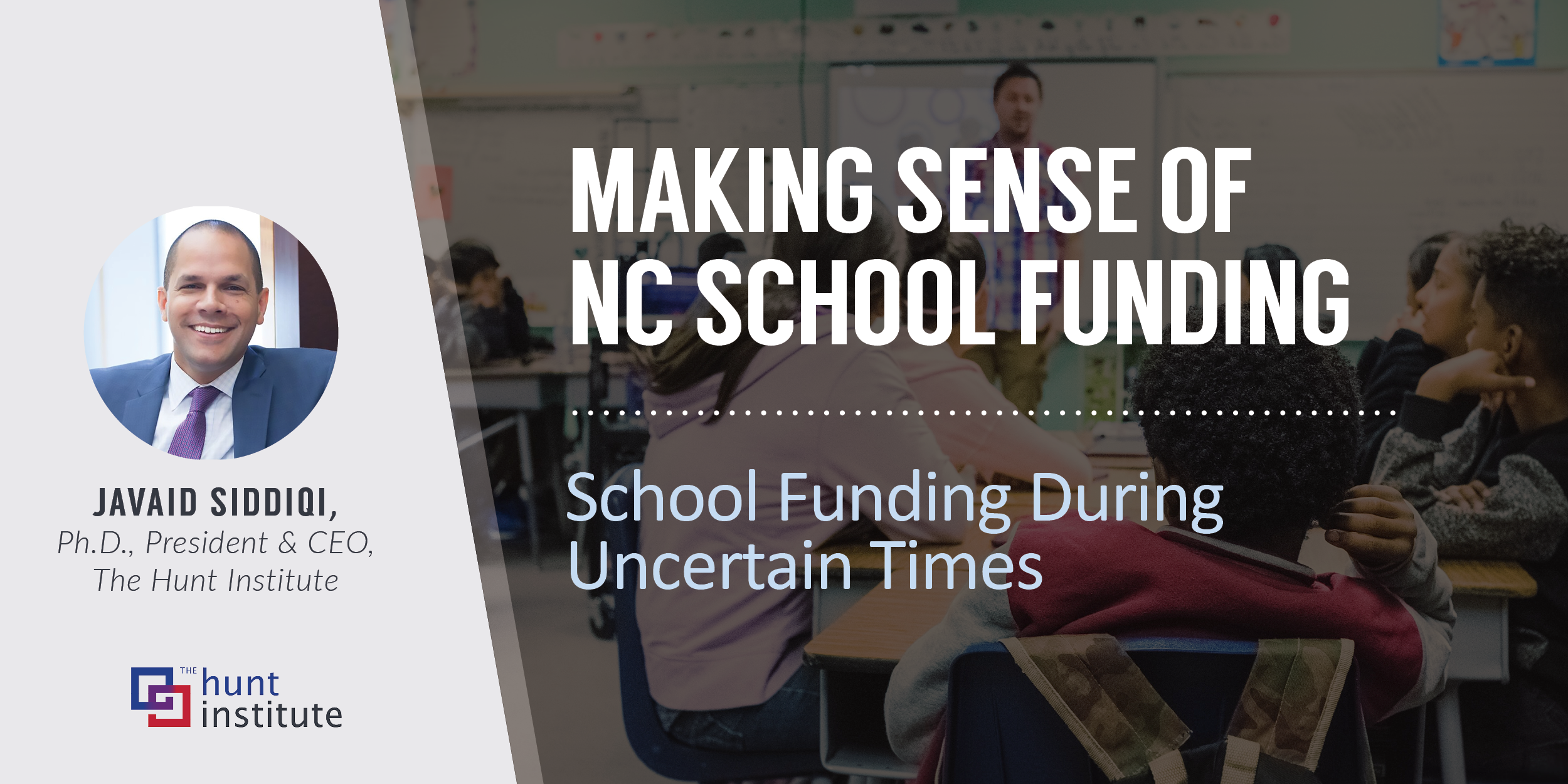

June 19, 2020
 The COVID-19 pandemic and subsequent economic downturn has caused significant uncertainty surrounding state and local tax revenues. These revenue shortfalls mean that policymakers have less money to allocate towards education and other government programs for the upcoming 2020-2021 fiscal year. As we wrap up this series on school funding in North Carolina, we are unexpectedly faced with the reality that the school funding landscape has changed. The full impact of COVID-19 on the state’s budget is yet to be seen, but it will undoubtedly impact the future of K-12 school funding. In this time of great uncertainty, competition for state funds will be fierce, and schools should anticipate decreasing budgets while facing rising costs.
The COVID-19 pandemic and subsequent economic downturn has caused significant uncertainty surrounding state and local tax revenues. These revenue shortfalls mean that policymakers have less money to allocate towards education and other government programs for the upcoming 2020-2021 fiscal year. As we wrap up this series on school funding in North Carolina, we are unexpectedly faced with the reality that the school funding landscape has changed. The full impact of COVID-19 on the state’s budget is yet to be seen, but it will undoubtedly impact the future of K-12 school funding. In this time of great uncertainty, competition for state funds will be fierce, and schools should anticipate decreasing budgets while facing rising costs.
In 2016-2017, 62.5 percent of revenue for public schools came from state funding. Schools will likely need to continue investing more in technology and broadband access to prepare for the potential of remote learning into the next school year. Supporting students who fall behind due to the anticipated “COVID Slide” given the abrupt disruption to learning this school year will bring additional costs such as tutoring or other support programs. Growing pension costs also impact both state and school budgets – and as the markets have declined in response to the COVID-19 disruptions, pension plans are estimated to take a hit, which will result in states and schools having to cover increased pension costs in the upcoming years.
To support states’ response to COVID-19, Congress passed the Coronavirus Aid, Relief, and Economic Security (CARES) Act. The CARES Act, which was signed into law on March 27, 2020, will provide a total of $30.8 billion for K-12 schools, institutions of higher education (IHE), and other purposes. Two specific funds support K-12 schools under this act. The Elementary and Secondary School Emergency Relief (ESS-ER) Fund is estimated to provide approximately $396,312,000 for North Carolina, while the Governor’s Emergency Education Relief (GEER) Fund is estimated at $94,989,000. On May 4, Governor Cooper signed two COVID-19 relief bills into law that use these federal funding dollars. The flexible funds support states and schools in providing continued education to students during COVID-19.
In addition to these federal funds, on March 24, Governor Cooper directed $50 million of unused funds from the current and previous school years, as well as the State Emergency Response and Disaster Relief Fund, towards a new flexible allotment for public schools to address COVID-19 related expenses. North Carolina LEAs will also be allowed to spend currently unspent funds in a more flexible way. Together these funds will help to support school nutrition programs, cleaning and sanitation efforts, and remote learning.
As the legislative session continues, there are a number of bills under consideration that would impact school funding. Research has shown us that investments in education positively impact student outcomes, while divestment does the opposite. Now is the time to take a closer look at school funding and budgets to ensure students and schools hit hardest by COVID-19 are supported as we move into upcoming school years.

Javaid Siddiqi, Ph.D.
President & CEO, The Hunt Institute